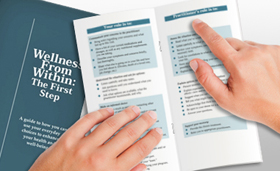Search Results
Whole Grain Pasta: Good For Your Health!

Judy E. Buss
Whole grains play a major role in a healthy diet. These edible gems are packed with disease-fighting, health-boosting nutrients. They contain lean protein, vitamins, minerals, antioxidants, fiber and numerous other beneficial compounds. As is the case in many other beneficial foods, pasta should also be consumed in moderation.
Grains are seeds from a family of grasses. In processed (abused) grains, vital parts of the seed have been removed in order to prolong shelf life and for other reasons. In “enriched” grains, some nutrients are artificially added back, however, this does not adequately compensate for the nutritional loss. White pasta, white bread, and white rice are some examples. Whole grain pasta is made from mostly durum or semolina (a type of wheat suitable for making pasta), but may also contain spelt, amaranth, rice, or even beans. Gluten intolerant individuals can substitute with pasta made from gluten-free grain or vegetables.
Whole grains are carbohydrates, however much confusion exists regarding them: To eat or not to eat? There are two types of carbs: simple and complex. Simple carbohydrates in fruit juices and processed food take little time to digest; consuming them leads to a quick spike in blood sugar, followed by a rapid drop, thus putting an enormous stress on the body’s glucose mechanism as well as promoting more frequent eating.
On the other hand, complex carbohydrates, which include whole grains, fresh (not canned) vegetables, whole fruits, legumes, nuts and seeds, require more time to digest and provide the body with slow, sustained release of energy and nutrients. Therefore, eating complex carbohydrates helps curb overeating and prevents the detrimental glucose roller coaster. Complex carbs are not fattening unless oversized portions are served, or assaulted by “calorie bombs” such as butter, sour cream, cheese sauces, bacon etc.
Ingredients listed on labels appear in the order of their amount present in the product. When choosing quality, whole grain pasta, the ingredient list should begin with durum flour or semolina. Any pasta, or grain product for that matter, starting with words such as “enriched” or “unbleached” and the like, should remain in the store…
Whole grain pasta presents an unlimited choice of delicious, hot and cold dishes. They can be made with steamed or raw vegetables, chicken nuggets, or shrimp, as well as vegetarian pasta and bean salads. Whole grain spaghetti and meatballs, or a small amount of quality cheese for mac n’ cheese aficionados are other options.
What we opt to put in our basket at the grocery store, amounts to a choice between health and disease! Instead of consuming processed, chemical- laden junk food, “convenience” food, and other “weapons of health destruction,” we can transform each meal into a health event. The following is one of numerous great-tasting pasta recipe options for you to try – enjoy!
PASTA MEDITERRANEAN
2 servings
2-1/2 cups uncooked, whole grain corkscrew pasta
4 tablespoons olive oil
1 large cooking onion, chopped
4 cloves garlic, minced
1/2 green bell pepper, cut into 1 inch strips
1/2 red bell pepper, cut into 1 inch strips
Salt and pepper
1 tablespoon oregano
5 tablespoons crumbled feta cheese
Cook the pasta according to package directions, drain and cool. Meanwhile, in a skillet heat the oil and cook the onion and garlic (covered) 10 – 12 minutes, or until the onion is translucent, stirring once or twice. Add the bell peppers, oregano, salt and pepper. Cook 10 – 12 minutes stirring occasionally, until the bell peppers are crisp-tender. Remove from the stove and stir the bell pepper mixture into the pasta and serve immediately. NOTE: this dish can be also made in advance, refrigerated, and served cold.
“Mission Nutrition” Tips and Recipes from Judy E. Buss, Syndicated Eating-for-Health Columnist
Stay tuned for more Judy E. Buss’ “Mission Nutrition” words of wisdom and recipes.




















